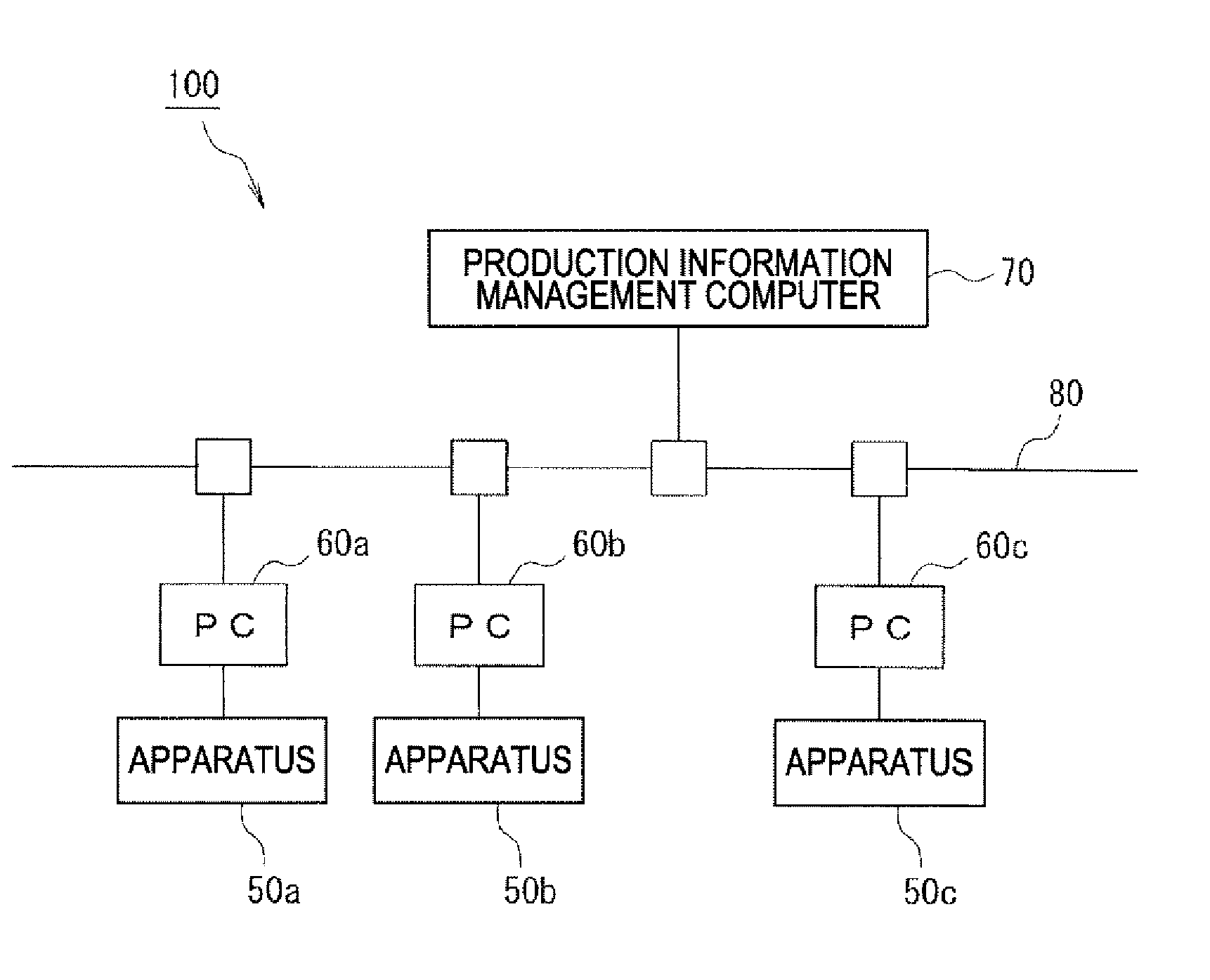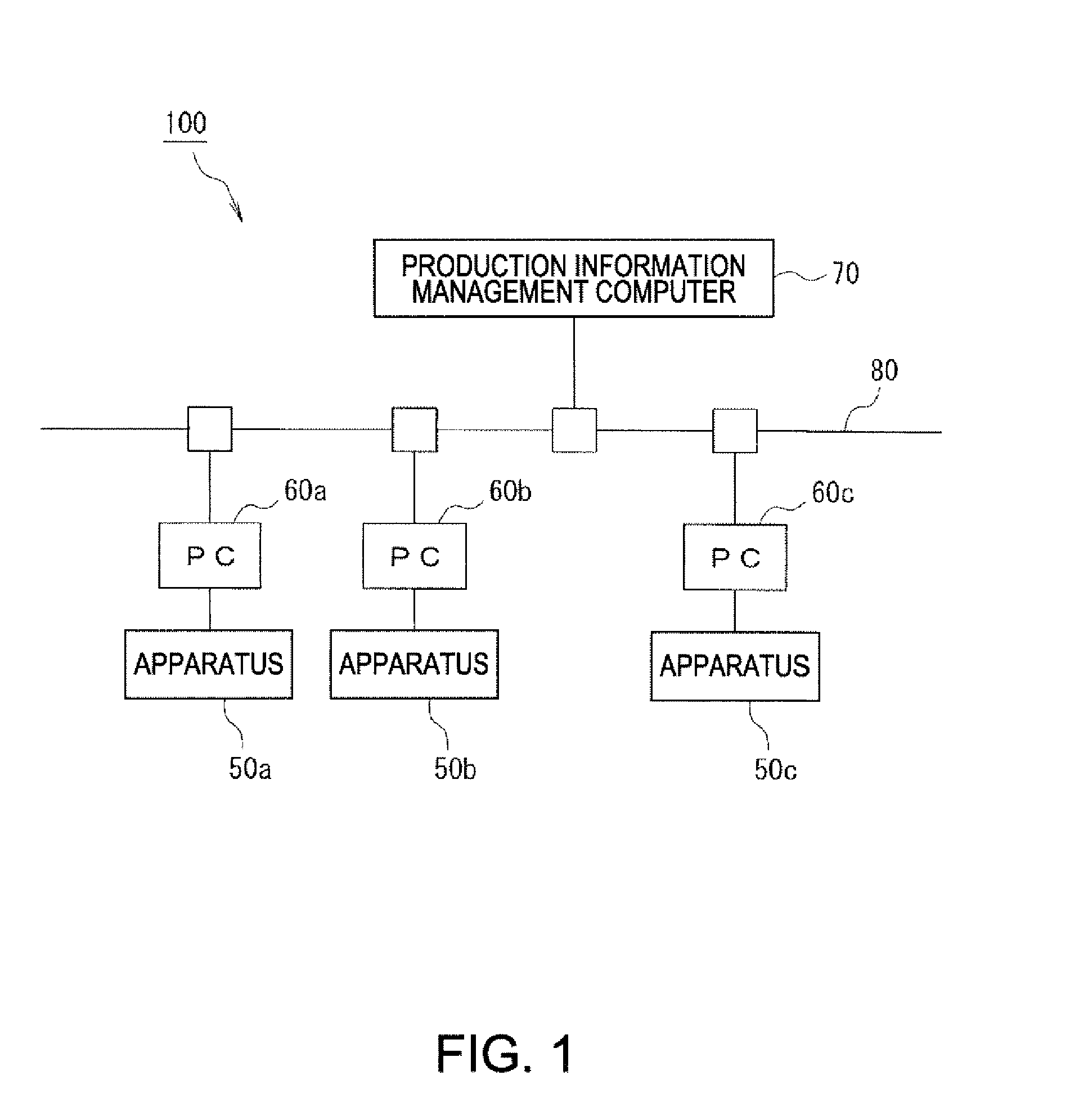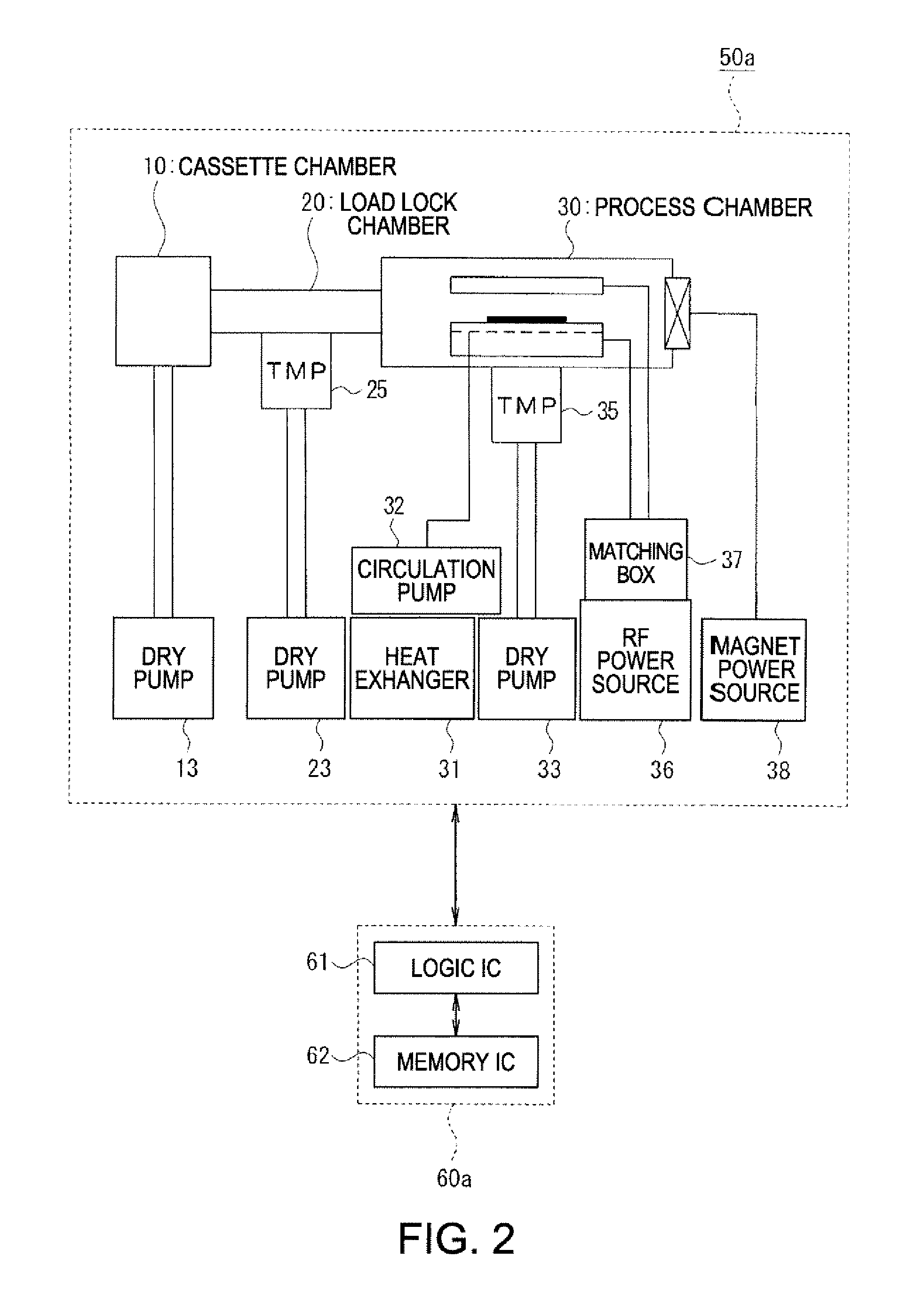Method and system for controlling semiconductor manufacturing apparatus
a manufacturing apparatus and semiconductor technology, applied in the field of method and system control of semiconductor manufacturing apparatus, can solve the problems of rare to keep the manufacturing apparatuses in non-stop operation, large energy loss, and inability to supply electric power to the units, and achieve the effects of reducing energy loss, reducing energy loss in the wait mode of the apparatus, and increasing energy consumption
- Summary
- Abstract
- Description
- Claims
- Application Information
AI Technical Summary
Benefits of technology
Problems solved by technology
Method used
Image
Examples
Embodiment Construction
[0049]Embodiments of the invention will now be described with reference to the drawings.
[0050]FIG. 1 schematically shows an example structure of a control system 100 of a semiconductor manufacturing apparatus according to the embodiments of the invention.
[0051]Referring to FIG. 1, the control system 100 includes: a plurality of semiconductor manufacturing apparatuses (hereunder referred to simply as manufacturing apparatuses) 50a, 50b, 50c, etc. arranged on a semiconductor devices production line, personal computers (hereunder referred to as PC) 60a, 60b, 60c, etc. each arranged corresponding to each of the manufacturing apparatuses 50, for example, a production information management computer 70 that manages production information of the products on the production line, and signal lines 80 that connect the PCs 60a, 60b, 60c, etc. to each other and send / receive data between the production information management computer 70 and the PCs 60a, 60b, 60c, etc.
[0052]Examples of the manufac...
PUM
 Login to View More
Login to View More Abstract
Description
Claims
Application Information
 Login to View More
Login to View More - Generate Ideas
- Intellectual Property
- Life Sciences
- Materials
- Tech Scout
- Unparalleled Data Quality
- Higher Quality Content
- 60% Fewer Hallucinations
Browse by: Latest US Patents, China's latest patents, Technical Efficacy Thesaurus, Application Domain, Technology Topic, Popular Technical Reports.
© 2025 PatSnap. All rights reserved.Legal|Privacy policy|Modern Slavery Act Transparency Statement|Sitemap|About US| Contact US: help@patsnap.com



